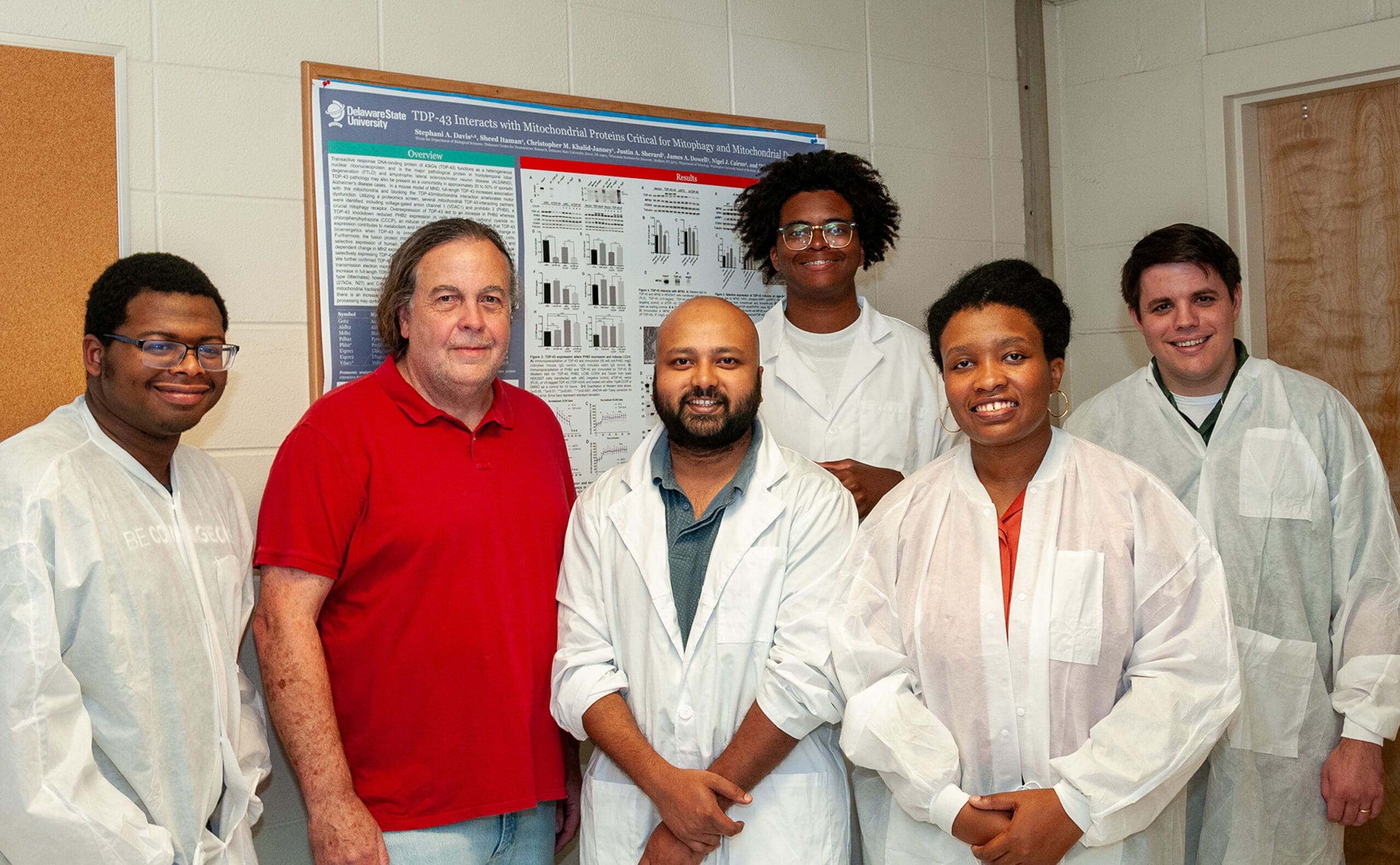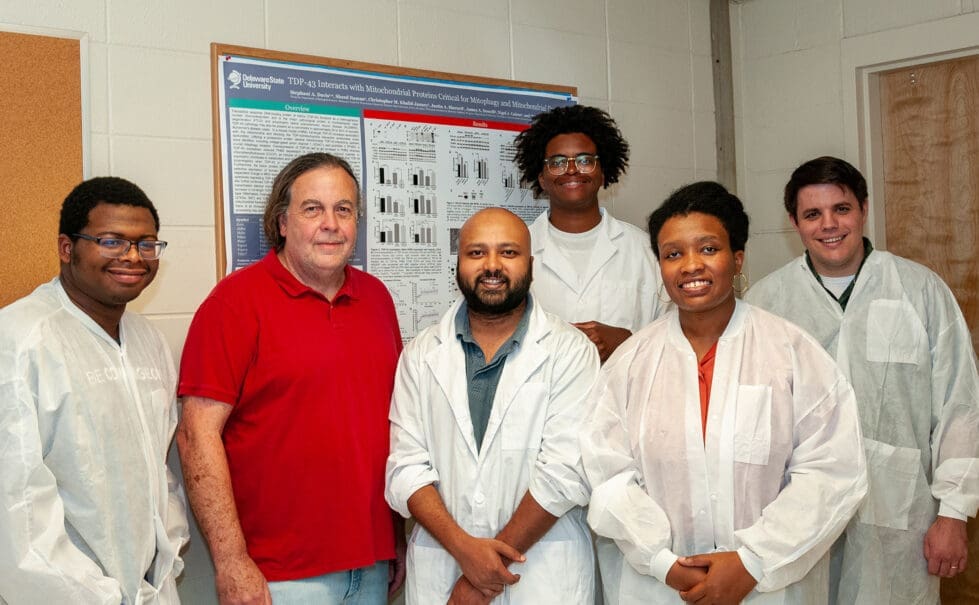
The DSU Alzheimer research team: (l-r) Tyler L. Petersen, Dr. Michael A. Gitcho, Muhammad I. Abeer, Isaiah N. Brooks, Juneessa M. Pressley, and Matthew B. Dopler.
Delaware State University is receiving a $500,000 donation to support the HBCU’s of the Alzheimer’s disease research program.
The gift came from the Paul H. Boerger Fund of the Delaware Community Foundation, a nonprofit organization focused on partnering with donors to build opportunity and advance equity in Delaware.
DSU’s Alzheimer’s disease research program is led by Michael Gitcho, an associate professor of biological sciences.
Alzheimer’s is a disease without a cute that negatively affects brain cell connections, resulting in the cells degenerating and dying, which eventually destroys memory and other important mental functions.
While 73% of people with the disease are 75 or older, folks of all ages can get the disease. More than six million Americans have Alzheimer’s disease, and more than two thirds of those that have it are women.
Gitcho pointed out that Alzheimer’s disease is the most common form of dementia, accounting for 70-80% of all cases.
The greatest risk factor for it is aging, he said, with 30 million people estimated to have Alzheimer’s worldwide. Over the next 30 years, that figure is expected to increase to more than 130 million worldwide.
Gitcho’s project, called “Changes in network connectivity as a biomarker for early detection of Alzheimer’s disease,” functional magnetic resonance imaging is used in a mouse model to determine the changes in network connectivity, through which the researchers hope to find early points for therapeutic intervention.
“We strongly believe that the path to a cure starts with support for the next generation of scientists,” Gitcho said.
Gitcho and his research team are developing new models of neurodegeneration that mimic the pathology and memory deficits associated with the disease.
They hope that these new models will help researchers gain a better understanding of pathways associated with the complex disease.
“The monetary support from this generous donation also provides students and researchers an opportunity to develop as scientists,” Gitcho said, “through career development, technical skill workshops, and presenting their work at meetings and conferences.”

Raised in Doylestown, Pennsylvania, Jarek earned a B.A. in journalism and a B.A. in political science from Temple University in 2021. After running CNN’s Michael Smerconish’s YouTube channel, Jarek became a reporter for the Bucks County Herald before joining Delaware LIVE News.
Jarek can be reached by email at [email protected] or by phone at (215) 450-9982. Follow him on Twitter @jarekrutz
Share this Post




